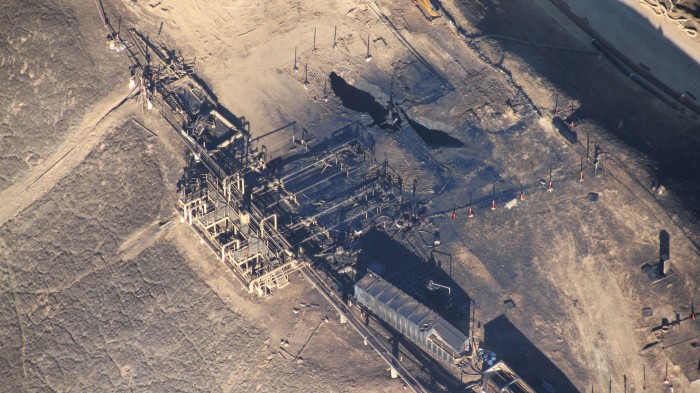America’s Methane Crisis Just Got Worse
Emissions of methane in the United States are far higher than previously understood, according to the Environmental Protection Agency. It’s something scientists have known for some time, but new figures released by the agency confirm that we’ve been lowballing our estimates of methane emissions. The revelation, announced last week by EPA administrator Gina McCarthy, showed among other things that methane emissions in 2013 were 27 percent higher than previous estimates.
The bad news came on the heels of the end of the Aliso Canyon natural gas leak in Southern California, arguably the largest such disaster ever. For four months, the ruptured gas-well complex spewed thousands of tons of methane into the atmosphere, a greenhouse gas 84 times more potent than carbon dioxide for the first 20 years it is in the atmosphere. The accident essentially “doubled the [methane] emission rate of the entire Los Angeles Basin, and in total released 97,100 metric tonnes of methane to the atmosphere,” according to a paper in Science.
Methane is emitted from equipment failures, like the Aliso Canyon disaster, but also from smaller undetected leaks and routine flaring of excess gas from oil wells. Gas lost annually due to leaks and flaring is worth $1.4 billion at 2015 prices, according to the EPA.

One reason that estimates of methane emissions vary so widely is that the gas is odorless, colorless, and dissipates quickly. Official figures don’t even include methane from “superemitters” like the Aliso Canyon event. The scientists who produced the Science study had to fly a small aircraft over the leak in order to measure how much gas it was emitting.
In a separate study published last week, a team of researchers from the University of California, Irvine, studied methane leaks in the Los Angeles Basin using a mobile lab equipped with sensors designed to measure methane, ethane, carbon monoxide, and carbon dioxide. They found 213 hot spots across the region.
Policymakers have begun to tackle the methane crisis: California governor Jerry Brown ordered Southern California Gas, owner of the Aliso Canyon facility, to cut future emissions by an amount equivalent to that leaked in the accident. And last year the EPA proposed new regulations that would cut methane emissions 40 to 45 percent from 2012 levels over the next decade. Unfortunately, the new rules would only apply to new natural gas infrastructure—not existing wells and pipelines that continue to emit methane.
(Read more: “California Gas Leak Exposes Growing Natural Gas Risks,” “Stop Emissions!”)
Keep Reading
Most Popular
Large language models can do jaw-dropping things. But nobody knows exactly why.
And that's a problem. Figuring it out is one of the biggest scientific puzzles of our time and a crucial step towards controlling more powerful future models.
How scientists traced a mysterious covid case back to six toilets
When wastewater surveillance turns into a hunt for a single infected individual, the ethics get tricky.
The problem with plug-in hybrids? Their drivers.
Plug-in hybrids are often sold as a transition to EVs, but new data from Europe shows we’re still underestimating the emissions they produce.
Google DeepMind’s new generative model makes Super Mario–like games from scratch
Genie learns how to control games by watching hours and hours of video. It could help train next-gen robots too.
Stay connected
Get the latest updates from
MIT Technology Review
Discover special offers, top stories, upcoming events, and more.